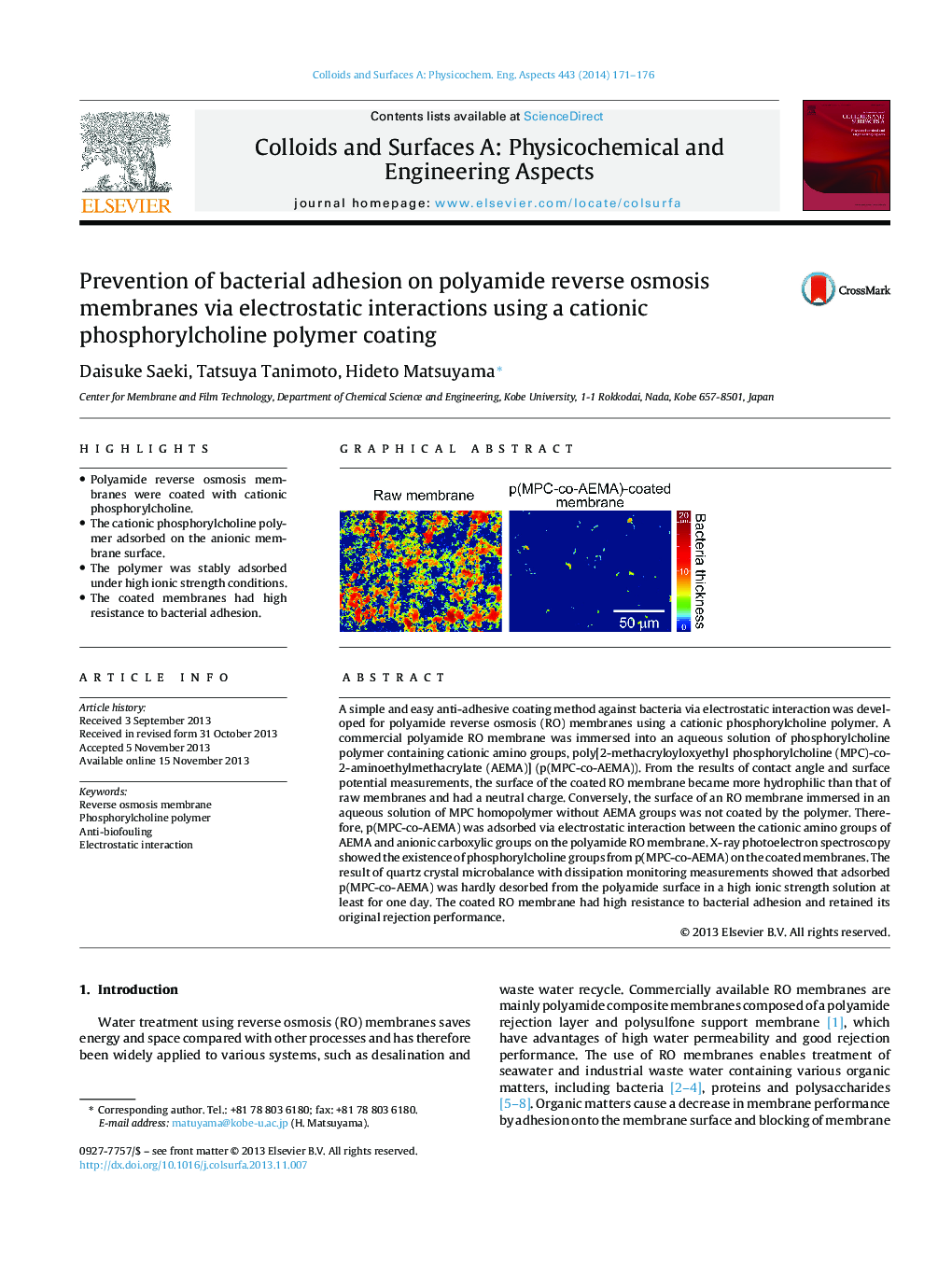| کد مقاله | کد نشریه | سال انتشار | مقاله انگلیسی | نسخه تمام متن |
|---|---|---|---|---|
| 592982 | 1453930 | 2014 | 6 صفحه PDF | دانلود رایگان |
• Polyamide reverse osmosis membranes were coated with cationic phosphorylcholine.
• The cationic phosphorylcholine polymer adsorbed on the anionic membrane surface.
• The polymer was stably adsorbed under high ionic strength conditions.
• The coated membranes had high resistance to bacterial adhesion.
A simple and easy anti-adhesive coating method against bacteria via electrostatic interaction was developed for polyamide reverse osmosis (RO) membranes using a cationic phosphorylcholine polymer. A commercial polyamide RO membrane was immersed into an aqueous solution of phosphorylcholine polymer containing cationic amino groups, poly[2-methacryloyloxyethyl phosphorylcholine (MPC)-co-2-aminoethylmethacrylate (AEMA)] (p(MPC-co-AEMA)). From the results of contact angle and surface potential measurements, the surface of the coated RO membrane became more hydrophilic than that of raw membranes and had a neutral charge. Conversely, the surface of an RO membrane immersed in an aqueous solution of MPC homopolymer without AEMA groups was not coated by the polymer. Therefore, p(MPC-co-AEMA) was adsorbed via electrostatic interaction between the cationic amino groups of AEMA and anionic carboxylic groups on the polyamide RO membrane. X-ray photoelectron spectroscopy showed the existence of phosphorylcholine groups from p(MPC-co-AEMA) on the coated membranes. The result of quartz crystal microbalance with dissipation monitoring measurements showed that adsorbed p(MPC-co-AEMA) was hardly desorbed from the polyamide surface in a high ionic strength solution at least for one day. The coated RO membrane had high resistance to bacterial adhesion and retained its original rejection performance.
Figure optionsDownload as PowerPoint slide
Journal: Colloids and Surfaces A: Physicochemical and Engineering Aspects - Volume 443, 20 February 2014, Pages 171–176
